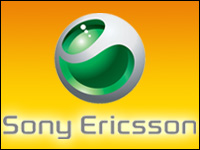
Two technology associations with significant clout on Capitol Hill are in talks to combine forces.
The two organizations, the AeA, formerly the American Electronics Association, and the ITAA, or Information Technology Association of America, began merger discussions several months ago.
Complementary Groups
“The real synergy between our two organizations is that [the ITAA] is particularly strong when it comes to IT contractors who depend on the government procurement business, an area AeA would like to grow in,” Phil Bond, president and CEO of ITAA, told the E-Commerce Times. “The AeA is strong in the commercial sector.”
The AeA also has a stronger presence in California’s Silicon Valley, while ITAA has more influence in Washington, D.C., said AeA President and CEO Christopher Hansen.
AeA has about 1,300 members, mostly small, medium and large technology businesses. The ITAA has about 350 after merging earlier this year with two other technology associations — the Government Electronics and Information Technology Association and the Cyber Security Industry Alliance.
The two nonprofit trade groups hope to have the merger done not long after the new presidential administration and Congress take over early next year. For now, the AeA and the ITAA are performing due diligence on the merger, Bond said.
If the merger goes through, the new association will be headquartered out of the Washington, D.C., or northern Virginia areas. The as-yet unnamed combined association will also maintain a strong presence in the Silicon Valley. The AeA already has a large office in Santa Clara, Calif., which is home to such tech industry giants as Intel and Sun Microsystems.
Hansen and Bond: No Strangers
ITAA’s Bond and AeA’s Hansen have watched each other operate behind the scenes on behalf of the technology industry for years.
“Phil and I have known each other for a long time,” Hansen told the E-Commerce Times. “He’s been in and around the industry.”
The two men share a common vision for what they think could be a larger, more influential trade organization looking out for the commercial and political interests of the technology industry.
“Phil has thought for a long time that there were too many technology trade associations out there and that they diluted the effect organizations like ours can have on the industry and in Washington, D.C.,” Hansen said. “I agreed.”
Merging Two Nonprofits
Both Hansen and Bond think merging two nonprofits is, in many ways, easier than a merger between two for-profit businesses.
“I spent most of my career in the aerospace industry, and I was at Boeing during the Boeing-McDonnell Douglas merger,” Hansen said. “With nonprofits, you don’t have to worry about SEC rules and stock prices. So, there are some sensitivities you don’t have in the association world. It’s not quite as financially driven as it is in the commercial world.”
That said, merging the two organizations won’t necessarily be easy.
For one thing, the two men have to convince their respective boards of directors that an alliance between the associations is worthwhile, Bond said.
Then there are the challenges two such organizations face, for-profit or otherwise.
“How do you fold the management teams and the boards together?” mused Hansen. “Are you truly complementary?”
Combined Membership, Combined Revenue
In 2007, the AeA reported about US$15 million in revenue. The ITAA reported about $8 million.
Both organizations derive revenue from membership fees, educational conferences, publications, financial summits, and business services such as healthcare insurance and rental car discounts for their members.
“That $23 million will make us, in terms of Washington, D.C.-based technology associations, the biggest association here,” Hansen said. “There are others with larger revenues because they have different models, but in terms of membership and the ability to influence Capitol Hill, we’re the biggest.”






















































Social Media
See all Social Media